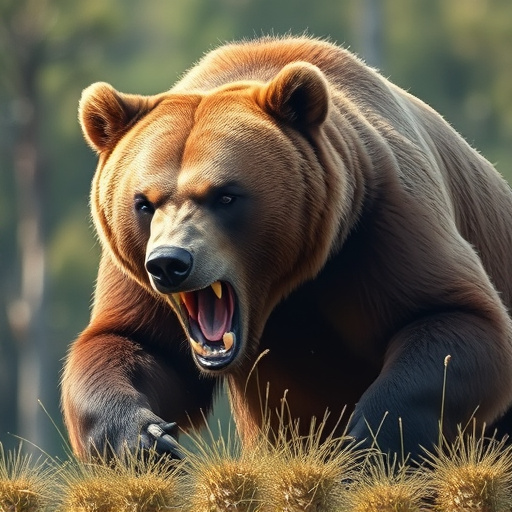Knowing wind direction is crucial for bear spray safety. Downwind increases risk of spray backfire, while upwind ensures broader coverage. Choose sprays with 360-degree patterns and follow manufacturer instructions on distance, timing, and technique to maximize protection during encounters. Always maintain awareness and stay calm around bears in the wild.
Alaska’s rugged wilderness presents an allure that draws adventurers, but it also harbors potential bear encounters. Ensuring safety is paramount, and a key tool in your defense arsenal is a bear spray fogger. This comprehensive guide explores vital aspects of protecting yourself against bears, focusing on understanding wind direction, selecting the appropriate bear spray, and mastering usage techniques for maximum safety while exploring Alaska’s great outdoors.
- Understanding Wind Direction in Bear Encounters
- Choosing the Right Bear Spray for Safety
- Effective Usage Techniques to Deter Bears
Understanding Wind Direction in Bear Encounters
When encountering a bear, understanding wind direction is crucial for both your safety and the effectiveness of your bear spray. Inhaling even a small amount of bear spray can be life-saving, but it needs to reach the bear’s face directly. If the wind is blowing away from you, the spray will likely drift harmlessly through the air rather than settling on the bear. Conversely, if the wind is coming towards you, there’s an increased risk that the spray could blow back onto you or be carried towards nearby bystanders.
Knowing and communicating the wind direction to your group members during a bear encounter allows everyone to position themselves accordingly, maximizing the chances of successful deployment and minimizing risks associated with bear spray safety. It’s also important to remember that local conditions can change rapidly, so continuous observation is key to adapting to shifting wind patterns.
Choosing the Right Bear Spray for Safety
When selecting bear spray for safety while outdoors in Alaska, understanding wind direction is key. Opting for a product with a wide fogging range ensures effective coverage against bears, even when the wind is blowing. Bear sprays designed with a 360-degree spray pattern offer the best protection as they can reach bears approaching from any angle.
Moreover, considering factors like can size, weight, and ease of use is essential for quick deployment in stressful situations. Look for bear sprays that are easily accessible and have a comfortable grip, enabling you to react swiftly when faced with potential bear encounters. Always follow manufacturer instructions regarding distance, timing, and application techniques for optimal bear spray safety.
Effective Usage Techniques to Deter Bears
To effectively deter bears, understanding wind direction is crucial. When using bear spray, aim for a crosswind or slightly upstream position relative to the bear’s movement. This ensures the spray reaches the bear while minimizing its impact on your own breathing and visibility.
Proper application techniques include spraying in a sweeping motion, covering the bear from head to tail, and continuing until the bear retreats or is no longer an immediate threat. Remember, bear spray is not a guarantee of safety; it’s a tool to buy time. Always be aware of your surroundings, remain calm, and follow recommended safety protocols when encountering bears in the wild.
When it comes to guarding against potential bear encounters, armed with the right knowledge about wind direction and effective bear spray usage techniques, you can significantly enhance your safety in Alaska’s wild landscapes. Choosing the appropriate bear spray that suits your needs is paramount for ensuring safety during outdoor activities. By understanding these key factors and practicing proper usage, individuals can effectively deter bears and protect themselves while exploring Alaska’s beautiful yet unpredictable wilderness.
